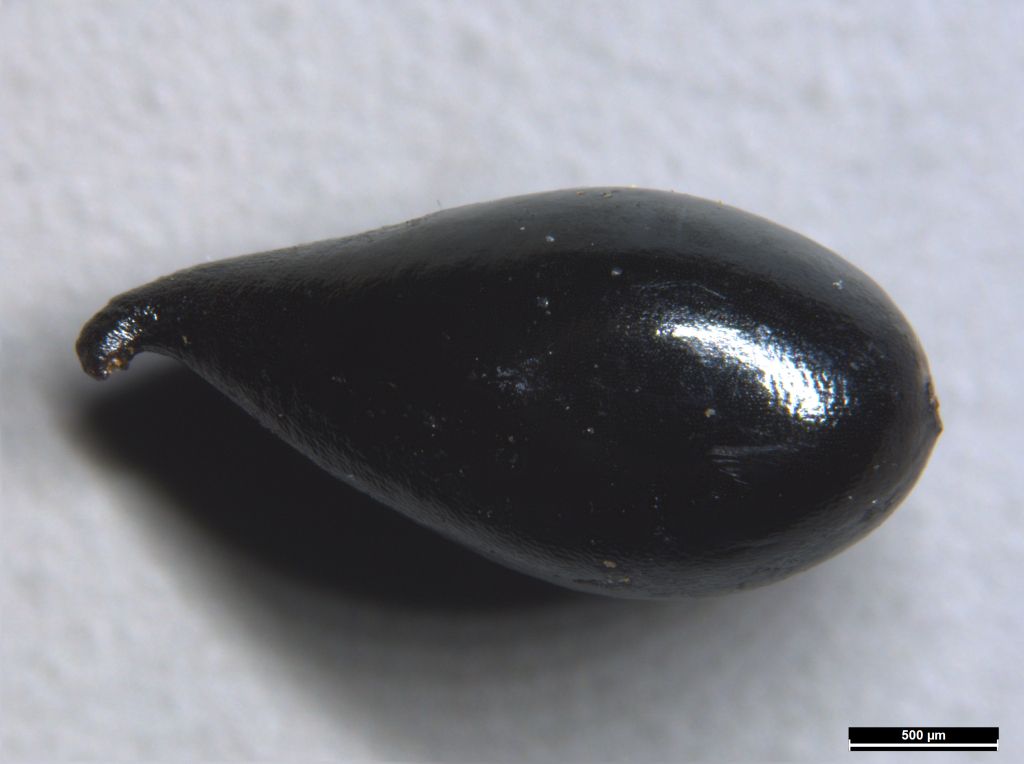Pimelea curviflora subsp. planiticola
N.G.Walsh & E.M.SchulzErect shrub to 50 cm high, usually single stemmed from base and probably regenerating from seed rather than resprouting after fire. Leaves 6–13 mm long, 2–4 mm wide, concolorous or slightly paler beneath, sparsely to moderately hairy on both surfaces (usually sparser adaxially). Inflorescence terminal and/or axillary, of compact 4–12-flowered clusters. Flowers yellow, yellow-green, or sometimes reddish toward the tip; perianth 5–7 mm long with appressed hairs 0.2-0.6 mm long; ovary portion 3–3.7 mm long, style-portion 1.6– 2.5 mm long; sepals not or only moderately spreading, 0.6–1.1 mm long, 1–2 times as long as the tubular part of the style portion. Seed ovoid, ca. 2.5 mm long, acute, distinctly broader proximally than distally, with slight constriction just above midway, and minutely uncinate at apex; seed coat finely textured with alveolae distinctly wider than long, in indistinct ranks, rarely quite smooth.
LoM, MuM, Wim, VVP, VRiv, MuF, Gold, NIS, EGU. Also SA, NSW. Known from grasslands and grassy woodlands of plains and ephemeral swamps from the Wimmera to the Murray River floodplain near Corowa, with outlying occurrences in the Snowy River catchment north of Orbost. Soils are predominantly clay-based and sometimes slightly saline.
Previously treated within the informal taxon P. curviflora var. aff. subglabrata but this has been shown to comprise two distinct taxa, both now treated as subspecies of P. curviflora (Walsh & Schulz 2020).
The Snowy River occurrences are atypical in habitat (rocky shrubland) and habit (several-stemmed from near the base), but floral and fruit characters are those of subsp. planiticola.
 Spinning
SpinningWalsh, N.G.; Schulz, E.M. (2020). Notes on Pimelea curviflora and P. micrantha (Thymelaeaceae, Sect. Epallage) and recognition of two new subspecies of P. curviflora. Muelleria 38: 111–123.

